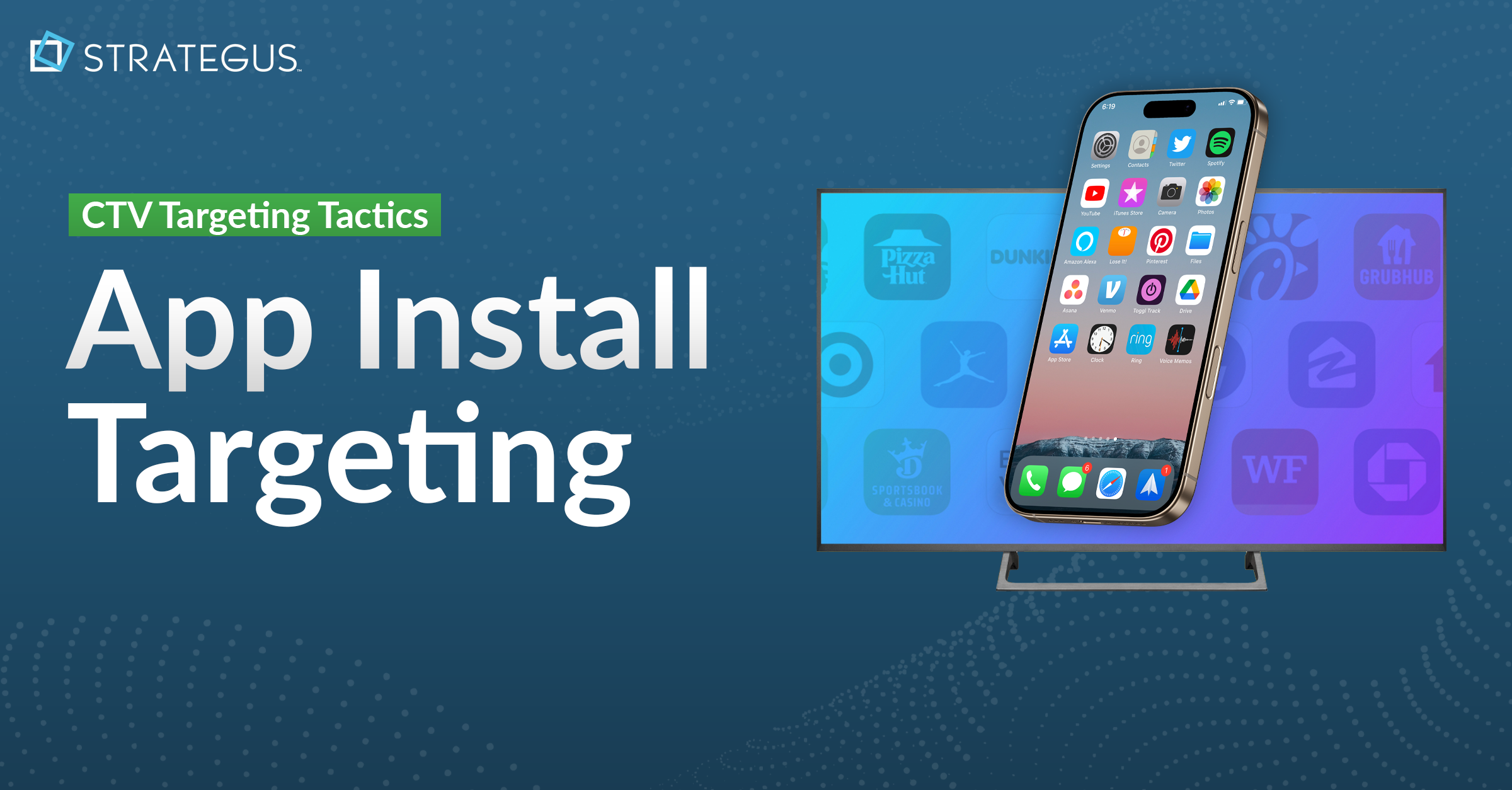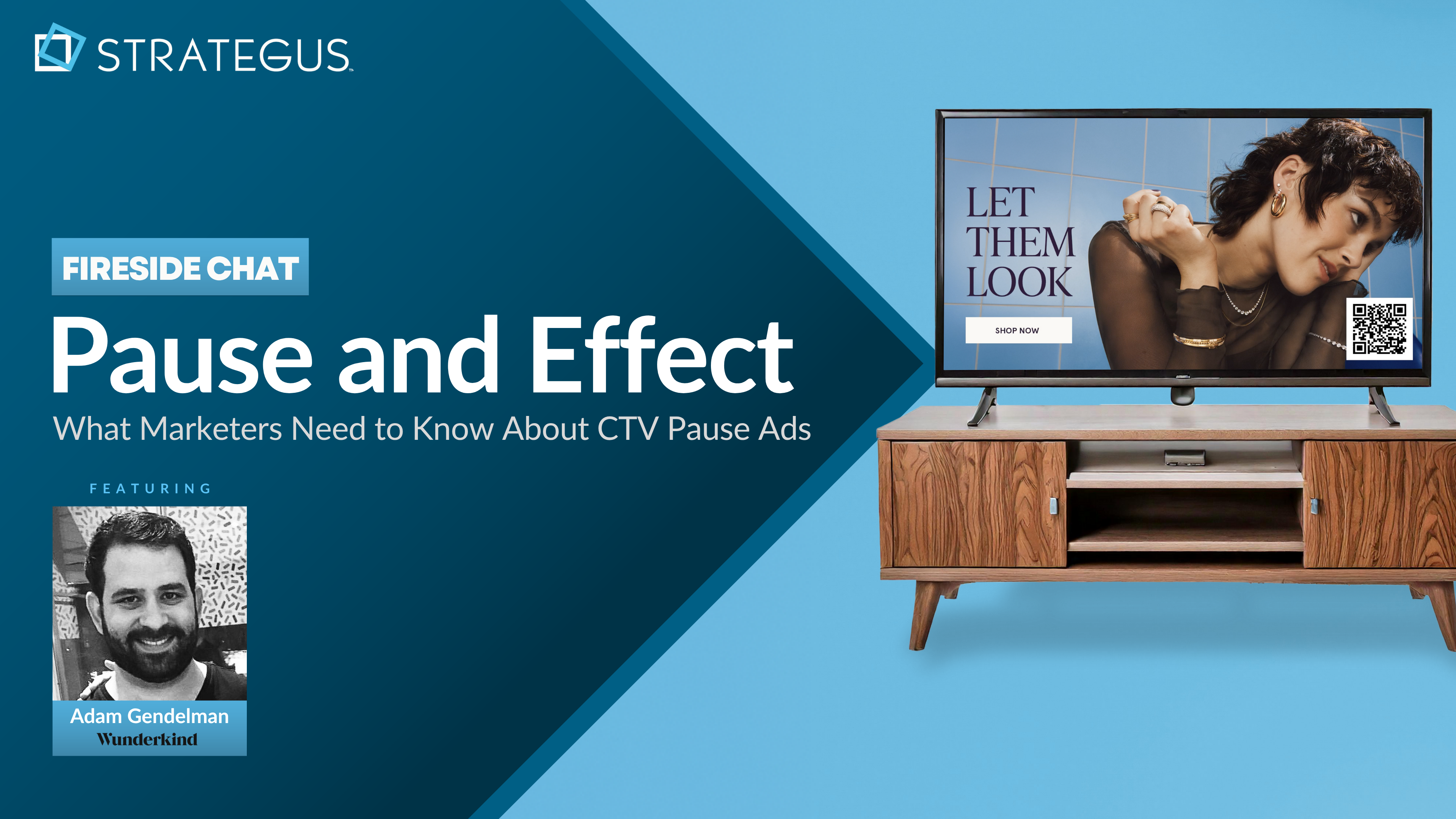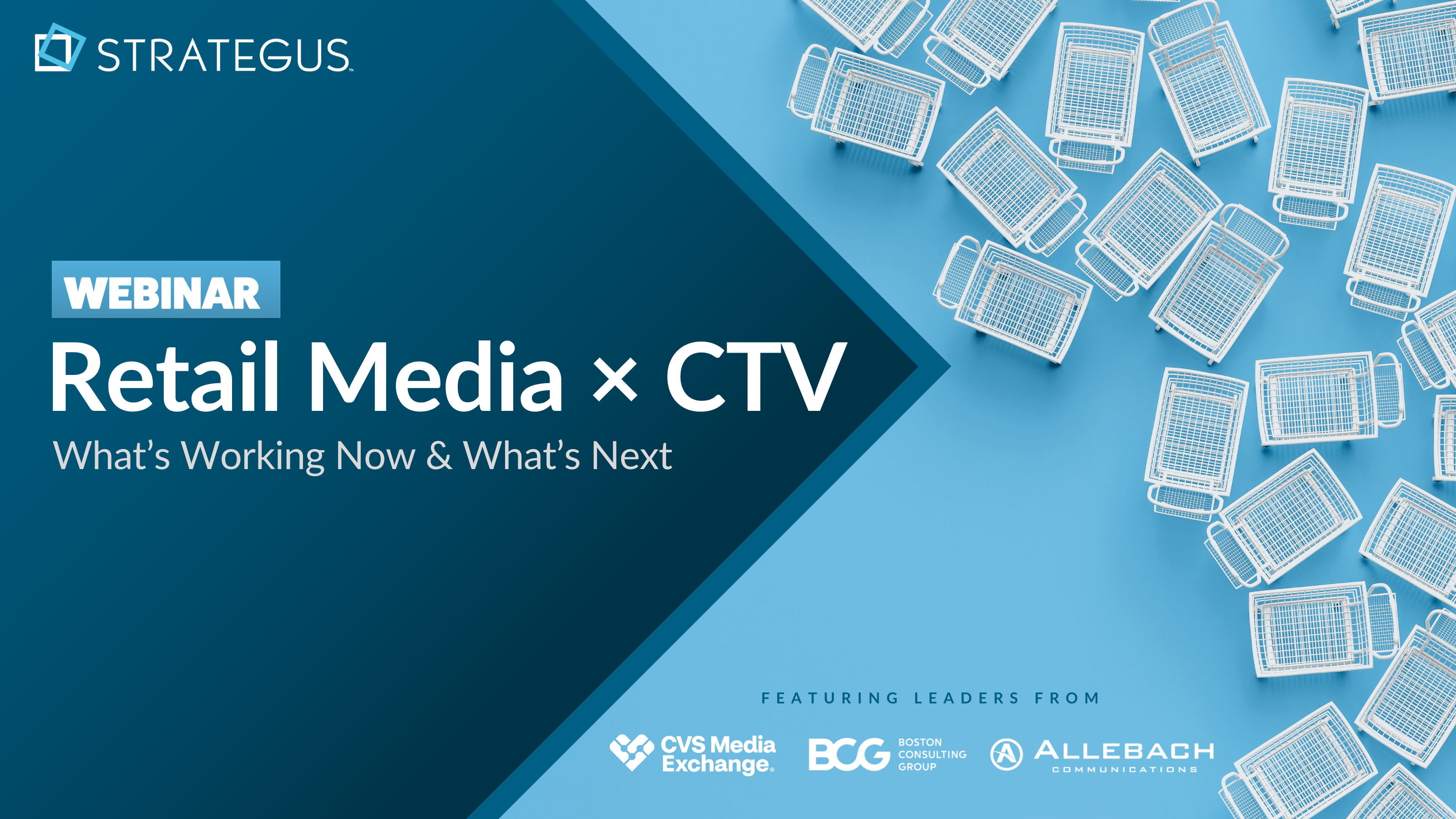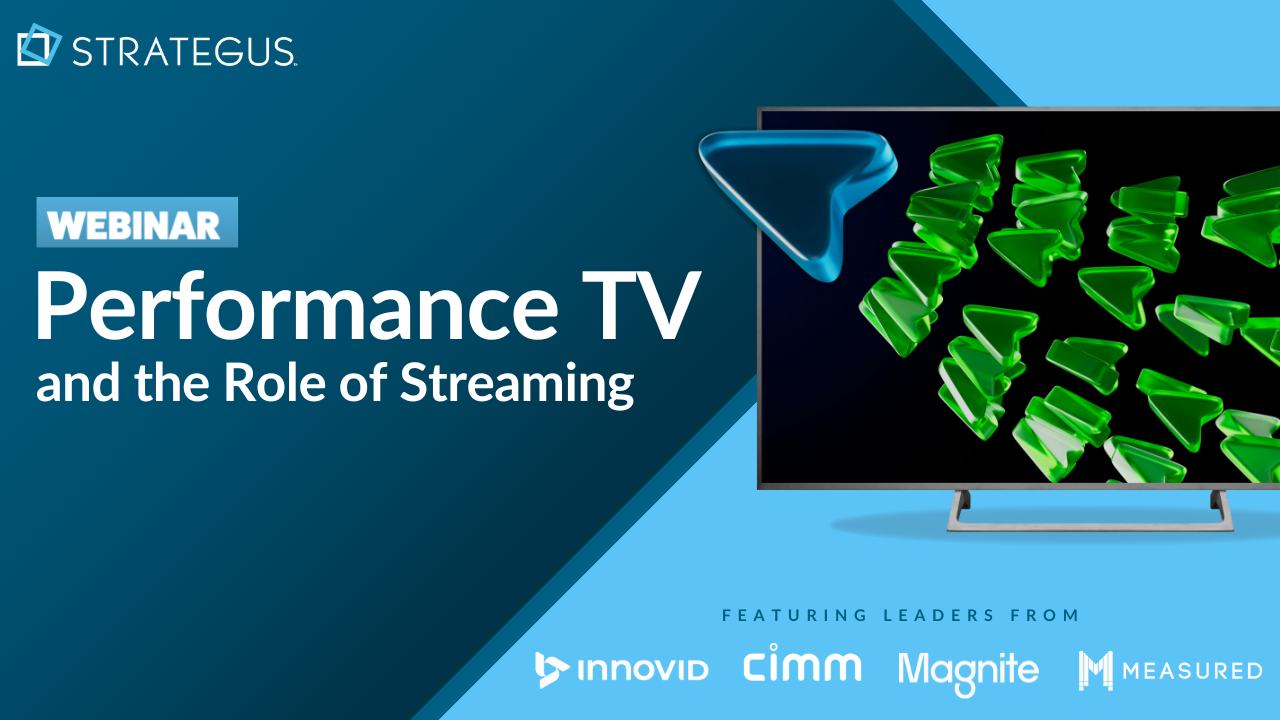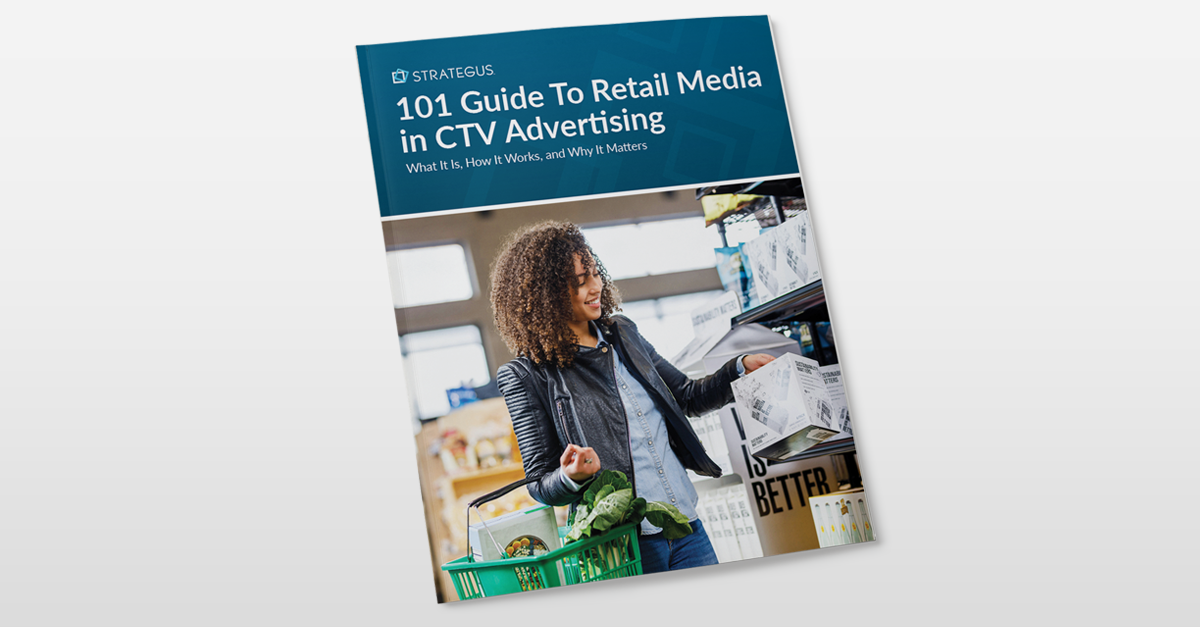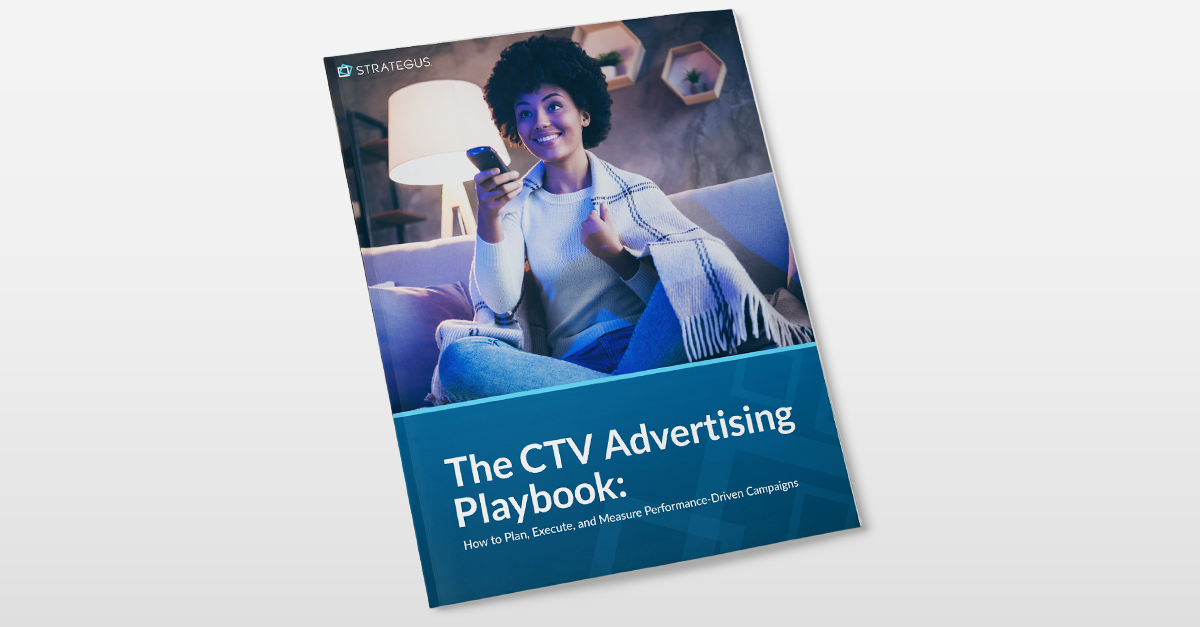- Home
- Strategus Blog
- What Is an Ad Exchange and How It Works (2025 Guide)
What Is an Ad Exchange and How It Works (2025 Guide)
 Traci Ruether
Traci Ruether
10 minutes read

Ever wondered how ads follow you around online or why some brands seem to appear everywhere? The answer is ad exchanges. These platforms connect advertisers and publishers in real time, making digital ad buying faster, smarter, and more cost-efficient.
This guide explains what ad exchanges are and how they work in 2025, and tips for marketers allocating ad budgets for connected TV (CTV) advertising.
Key Takeaways
- An ad exchange is a digital marketplace where advertisers and publishers buy and sell ad space in real time, especially across CTV.
- Advertisers benefit from broader reach, better targeting, automation, transparent reporting, and fair market pricing.
- Publishers benefit from higher competition, more buyers, revenue control, and reduced manual effort.
- Risks for advertisers include ad fraud, brand safety concerns, high complexity, and unpredictable costs.
- Risks for publishers include revenue swings, low-quality ads, compliance issues, and loss of some control.
- Most CTV inventory is now bought programmatically, with private marketplaces offering safer, premium options compared to open exchanges.
- Strategus simplifies CTV buying with premium access, strong data integrations, and full campaign management. Speak to a Strategus expert to learn more today.
What Is an Ad Exchange?

An ad exchange provides a place for vendors to buy and sell TV inventory using programmatic real-time bidding. These digital marketplaces connect advertisers, supply-side platforms (SSPs), demand-side platforms (DSPs), and publishers.
OpenX and Magnite are two of the most popular ad exchanges in the connected TV (CTV) industry.
What Makes Ad Exchange Worth It?
Ad exchanges are an effective marketplace that solve several problems for advertisers and publishers. Here are some ways ad exchangers can make your campaigns more efficient.
Benefits for Advertisers
- You Reach More People Fast: Ad exchanges let you buy ad space across many websites or apps at once. You don’t need to contact each publisher separately.
- You Control Who Sees Your Ads: You decide who sees your ad by using data about age, location, interests or behavior. That cuts waste.
- You Save Time and Effort: Ad exchanges automate bidding, buying, and placement of ads. You avoid manual steps and long negotiations.
- You Get Better Value: Real-time bidding means you pay only what the market offers for each ad impression. You avoid overpaying.
- You Get More Transparency: You see where your ad runs, what you pay, and how well it performs. That helps you optimise campaigns.
Benefits for Publishers
- You Earn More Money: Ad exchanges let multiple advertisers bid on your ad space. That competition drives up prices.
- You Access More Advertisers: You don’t depend on just a few. You gain buyers from many sources which increases chances to fill ad slots.
- You Keep Control Over Your Inventory: You decide ad format, placement, and set minimum prices for ads. You reject ads that don’t match your audience or brand.
- You Get More Predictability in Pricing: You can set floor price (minimum acceptable bid). That prevents very low bids.
- You Reduce Manual Work: Automation handles most of the matching, bidding, and delivery of ads. You focus more on strategy and content.
What are the Downsides of Ad Exchanges
While the benefits make ad exchanges a must-have for your campaigns, there are some things here you need to be aware of:
Downsides for Advertisers
- Ad Fraud Risk: Fake sites or bots can waste your budget with impressions or clicks that never reach real people.
- Brand Safety Concerns: Ads may appear next to harmful or unsuitable content, hurting your brand image.
- Low Control Over Placements: You may not always know the exact site or page where your ad appears.
- High Complexity: Running campaigns, targeting, and bidding needs skill and tools. Mistakes can get expensive.
- Unpredictable Costs: Real-time bidding can make ad prices jump when competition rises.
- Viewability Problems: Ads may load but stay unseen if placed in low-visibility areas of a page.
Downsides for Publishers
- Low-Quality Ads: Some advertisers may push irrelevant or poor-quality ads, which can harm user experience.
- Revenue Uncertainty: Bidding prices change often, so income may swing from high to low.
- Loss of Control: Publishers sometimes struggle to fully block certain advertisers or ad types.
- Fraud Association: If fraudulent ads sneak through, it can hurt publisher trust and reputation.
- Privacy and Compliance Risks: New laws on data use (like GDPR) require extra care to avoid penalties.
How Do Marketers Buy CTV Ad Inventory?
CTV ad inventory can be bought in two ways: programmatically using an ad exchange or via direct sales. Here’s how the two compare.
|
Programmatic Ad Buying |
Direct Sales |
|
Automated exchange of ad space purchased via real-time bidding |
Direct sale of ad space from content or app owners bought via a lengthy hands-on process |
|
Provides access to a breadth of inventory across multiple properties |
Inventory is limited to the publisher’s owned properties |
|
Efficient, software-based process |
Manual, inefficient process |
|
Purchased via a private marketplace or open exchange |
Purchased as a sponsorship or direct insertion order |
Programmatic ad buying provides more flexibility and efficiency than the direct sales approach. For this reason, almost 90% of CTV buys are transacted programmatically. But within the programmatic category, marketers face another crossroads between open and private marketplaces.
Open Ad Exchanges vs. Private Ad Exchanges
Ad exchanges come in two different types: open ad exchanges and private marketplaces. The difference between the two comes down to inventory quality and access.
- Open ad exchanges can be accessed by any advertisers looking to buy inventory, as well as third-party ad networks looking to resell ad space. Think of these as the eBay of digital inventory.
- Private marketplaces (PMPs) are more exclusive, controlling which media buyers can participate. These restricted environments provide access to premium inventory, which helps prevent ad fraud and help improve brand safety. PMPs are more like invite-only shopping events at luxury stores (to extend the metaphor from the last bullet).
Because PMPs combine the premium content that media buyers demand with the efficiency of programmatic buying, they’re often the best option.
But to gain access to a PMP, advertisers need to establish relationships with publishers or work with a CTV provider like Strategus with a network of inventory partners.

How Do Ad Exchanges Work
Machine learning, also known as AI, is the driving force behind ad exchanges. It allows ads to be bought on a per-viewer basis without any human intervention during the bidding process.
Here’s how the programmatic ad-buying process works:
- A user settles in for their favorite show on a streaming app like Hulu, Tubi, or YouTube TV.
- The app sends a bid request to an SSP looking for advertisers to compete for the ad spot. The request includes information about the user’s digital footprint, such as their viewing habits, demographics, location, and more.
- An ad exchange connects the SSP with DSPs to centralize and automate media buying across multiple sources.
- A DSP or an ad network connects advertisers to the exchange, allowing them to set parameters for how they target ads, and then make purchases via real-time bidding.
- In a split second, the highest bidder wins the ad slot, and the viewer is served a relevant commercial without any noticeable lag.
What occurs behind the scenes is painstakingly complex. But for the viewer, it’s seamless. So why are there so many moving parts?
Ad Exchanges vs. Ad Networks vs. DSPs: The Programmatic Supply Chain
An ad exchange is a digital marketplace where ad space gets bought and sold in real time. An ad network bundles inventory from many publishers and sells it in bulk, often with less transparency. A DSP (demand-side platform) is the tool advertisers use to bid on and buy inventory from ad exchanges automatically.
Let’s understand in detail how different components work together across programmatic CTV.
1. Supply-Side Platforms (SSPs)
SSPs serve publishers and content owners. They enable the selling of ad inventory by acting as the middleman between publishers with ad exchanges. SSPs send bid requests to the ad exchanges when ad space becomes available, providing detailed information about the audience.
2. Ad Exchanges
Serving as the central hub, ad exchanges connect SSPs and DSPs, facilitating the real-time auction of ad impressions. The instantaneous nature of these auctions allows for efficient and competitive ad buying, ensuring that the highest bidder secures the ad space.
3. Demand-Side Platforms (DSPs)
On the flip side of SSPs, DSPs represent advertisers. They evaluate bid requests from SSPs and use algorithms to decide which ad impressions to bid on and at what price. DSPs are picky and make sure that advertisers' messages reach the right audiences.
4. Ad Networks
Ad networks may also participate in the bidding process as resellers. These aggregate inventory from multiple sources and offer it to advertisers, providing additional options for reaching their target audience. Many ad networks buy inventory from ad exchanges and then mark it up. This only further complicates the CTV supply chain.
5. Data Providers
Data is the backbone of programmatic advertising. Data providers supply valuable information about user behavior, demographics, and preferences. Advertisers use this data to make informed decisions and target specific audience segments effectively.
Closing Thoughts — Simplify CTV Media Buying With Strategus
Given the complexity, at one point you’re going to question if your current team and expertise are enough to run a successful marketing campaign. The ad spends are big and the margin for error is low. This is where managed CTV services enter the picture.
The CTV supply chain can feel overwhelming, but Strategus makes it simple. Our partners get:
- Seamless access to premium CTV inventory across top publishers and platforms
- Direct integrations with ad exchanges, SSPs, DSPs, and data partners
- Hands-on campaign execution from setup to optimization
- Vendor-agnostic flexibility that ensures the best mix of partners for your goals
- Access to our proven expertise to simplify CTV advertising and drive measurable results
We’re the right partners to help squeeze out every last bit of performance from your ad spend. Speak to a Strategus expert to learn more today.
Frequently Asked Questions
1. Who Uses Ad Exchanges?
Ad exchanges are used by advertisers, agencies, publishers, and ad tech platforms. Advertisers and agencies use them to reach specific audiences quickly. Publishers use them to sell ad space to the highest bidder. Ad tech partners like DSPs and SSPs connect both sides, making transactions faster and more efficient.
2. Why is an Ad Exchange Important for Digital Campaigns?
An ad exchange matters because it helps advertisers buy ad space at fair market prices while reaching the right audience. It gives publishers more chances to sell inventory at higher value. The process is transparent, real-time, and automated, which saves time and maximizes campaign efficiency.
3. How Can I Identify the Ad Exchanges Used by Leading Brands?
You can check industry reports, case studies, and ad tech reviews to see which ad exchanges brands prefer. Tools that track ad placements also reveal this data. Many leading brands often choose trusted platforms like OpenX, Magnite, or Google AdX for scale, safety, and premium inventory access.
4. What Challenges Do Publishers Face in the Open Ad Exchange?
Publishers face risks such as lower-quality ads that hurt user experience, unpredictable income from fluctuating bids, and reduced control over which ads appear. They also deal with fraud attempts and compliance pressures. Managing these issues requires strong monitoring, floor pricing, and partnerships with reliable ad tech providers.
5. How Do Ad Networks Facilitate Retargeting Across Multiple Channels?
Ad networks collect audience data and use it to deliver ads across websites, apps, and streaming platforms. This allows brands to reach users after they visit a site or app. Retargeting ensures that ads follow potential customers across channels, increasing chances of conversion and brand recall over time.
6. How Do I Set Up Programmatic Advertising for Video On Demand or CTV?
To set up programmatic ads for VOD or CTV, you need a DSP or managed service provider. Start by defining your target audience, budget, and creative assets. Then connect with exchanges or private marketplaces with CTV inventory. Tracking performance helps optimize campaigns and improve return on spend.
7. What is the difference between open exchange ads and private marketplaces?
Open exchanges allow anyone to buy ad space, offering wide reach but less control. Private marketplaces limit access to selected advertisers and provide premium inventory. PMPs usually deliver better brand safety, transparency, and content quality. Marketers often choose PMPs when they want both efficiency and higher-quality placements.
8. Is advertising on an ad exchange safe?
Ad exchanges provide access to vast inventory, but safety depends on safeguards. Risks like ad fraud and harmful placements exist. Choosing exchanges with strong verification, fraud detection, and brand safety controls reduces exposure. Private marketplaces also offer safer environments because they limit who can buy and sell inventory.
9. What does PMP stand for in advertising?
PMP stands for Private Marketplace. It is an invitation-only digital marketplace where publishers offer premium ad inventory to selected advertisers. PMPs combine the automation of programmatic buying with controlled access. This setup reduces fraud, ensures higher-quality placements, and allows advertisers to align with trusted publishers more easily.
10. How to monitor your ad inventory effectively?
Publishers can monitor inventory by using SSP dashboards, analytics tools, and fraud-detection systems. Setting floor prices, blocking low-quality ads, and tracking performance metrics protect revenue and user experience. Regular audits and partnerships with verified ad tech vendors help maintain transparency, optimize pricing, and ensure better brand alignment.

Traci Ruether is a content marketing consultant specializing in video tech. With over a decade of experience leading content strategy, she takes a metrics-driven approach to storytelling that drives traffic to her clients' websites. Follow her on LinkedIn at linkedin.com/in/traci-ruether or learn more at traciruether.com.
Strategus is a managed services connected TV(CTV) advertising agency with over 60,000+ campaigns delivered. Find out how our experts can extend your team and drive the result that matter most.
Talk to an Expert
Table of Contents
Seeking a Custom CTV Strategy That Delivers?
What to read next
App Event Tracking: Tie Mobile App Activity to CTV Campaigns
Let’s say you’re running a CTV campaign for a personal finance app.
5 minutes read

Stop Guessing Who Your Audience Is — Let Their Apps Tell You
Connected TV (CTV) targeting often falls in one of two camps.
8 minutes read
See Who Bought After Your Ad + How Much They Spent
You can’t improve what you can’t measure. And for years, that’s been a major problem with TV advertising.
4 minutes read
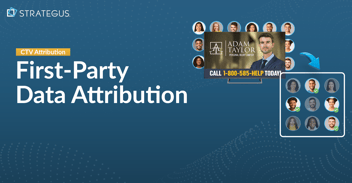
First-Party Attribution: Match Ads to Sales With CRM Data
The value of first-party data continues to grow.
7 minutes read



